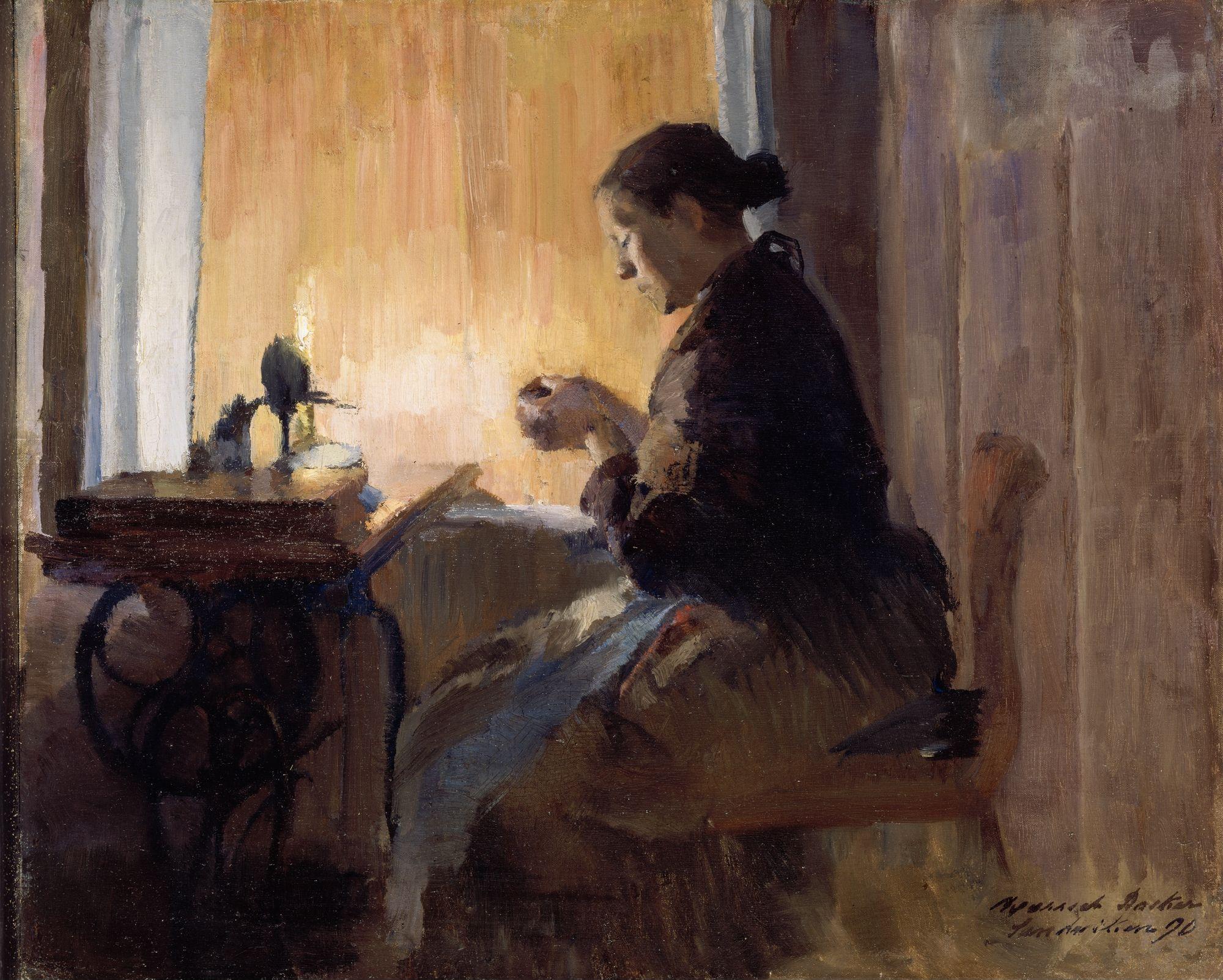Woman Sewing by Lamplight
Harriet Backer
Transcription
Narrator:
The sewing machine was one of the industrial revolution's most important inventions, and with Kristiania's urbanization in the 19th century, the number of so-called “sewing women” grew immensely.
Many unmarried women and widows of the working class tried to make a living in this way. And, in the 1880s, sewing women became important figures in literature, focusing on their difficult struggles.
Backer's colleague, the painter Christian Krohg, made the fictional sewing woman Albertine the main character both in several of his paintings, and in his novel with the same name. As poor working-class women, they were particularly vulnerable to ending up in prostitution, a major theme in art and literature at this time. In Backer's painting, on the other hand, the formal and visual aspects of the image seem to be at least as important as the subject's social context.
As in several of Backer’s depictions of women at work, here too we see the model positioned almost in silhouette in front of the light source, and strongly backlit. In this case, the woman is sitting by a sewing machine table, and is in the process of treading a needle.
The concentrated lamp light gives a strong contrast - the warm and flame-like orange against the cool violet-blue.
The painting style is quite rough, with clear brush strokes.
The colors are muted and well-coordinated; the only thing that stands out is a red spot in the woman’s lap, maybe a thread of wool or a piece of fabric?
The artwork’s modest size and sketch-like expression make it reminiscent of a preparatory study.
The work was made at a time when the distinction between studies and finished paintings was somewhat dissolving. And the image recalls similar experiments by colleagues such as Christian Krohg and Edvard Munch – pointing towards experimentation with abstraction within modernist art.